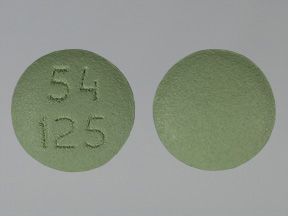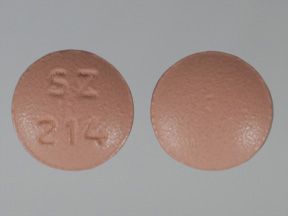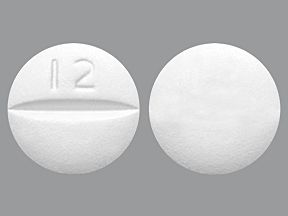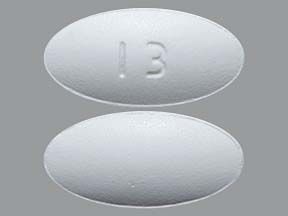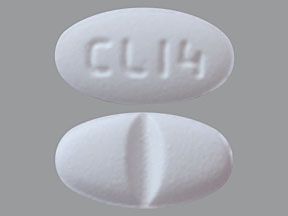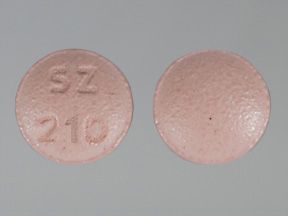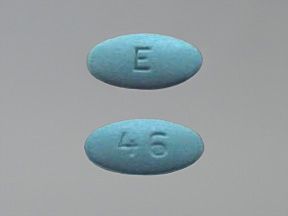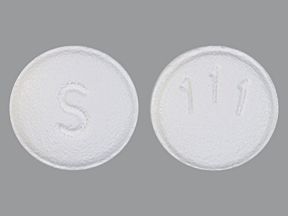- Losartan oral tablet is available as a brand-name drug and a generic drug. Brand name: Cozaar.
- Losartan comes only as a tablet taken by mouth.
- Losartan is used to treat hypertension (high blood pressure) in adults and some children. It is also used to help the kidneys work better in people who have diabetes. In addition, it is used to reduce the risk of stroke in someone who has high blood pressure and a heart condition called left ventricular hypertrophy.
Losartan is a prescription drug. It comes as an oral tablet.
Losartan is available as the brand-name drug Cozaar. It is also available as a generic drug. Generic drugs usually cost less than the brand-name version. In some cases, they may not be available in every strength or form as the brand-name drug.
Losartan may be taken as part of a combination therapy with other medications to lower blood pressure.
What is losartan used for?
Losartan is used for three main purposes. It is used to:
- treat high blood pressure in adults and some children
- lower the risk of stroke in adults with high blood pressure and left ventricular hypertrophy (LVH), which is a condition that causes the walls in the heart’s left ventricle to thicken
- treat diabetic nephropathy, which is kidney disease caused by diabetes, in certain adults with type 2 diabetes and high blood pressure, either currently or in the past
Losartan drug class
Losartan belongs to a class of drugs called angiotensin receptor blockers (ARBs). A class of drugs is a group of medications that work in a similar way. They are often used to treat similar conditions.
Other ARBs include olmesartan, valsartan, and telmisartan. Like losartan, these drugs can be used to treat high blood pressure and other heart problems.
How losartan works
Losartan works by blocking the action of angiotensin II, a chemical in the body that causes the blood vessels to tighten and narrow. Losartan helps relax and widen the blood vessels. This lowers blood pressure.
This action helps treat high blood pressure as well as the other two conditions losartan is usually prescribed for. High blood pressure and left ventricular hypertrophy (LVH) increase the risk of stroke, so lower blood pressure reduces that risk.
Lower blood pressure also reduces the risk of kidney damage. This is because high blood pressure raises the risk of kidney damage that is caused by the high blood sugar levels linked with diabetes.
Losartan can cause mild or serious side effects. The following list contains some of the key side effects that may occur while taking losartan. This list does not include all possible side effects.
For more information on the possible side effects of losartan, or tips on how to deal with a troubling side effect, talk with a doctor or pharmacist.
More common side effects
The more common side effects that can occur with losartan include:
- upper respiratory infections, such as the common cold
- dizziness
- stuffy nose
- back pain
- diarrhea
- fatigue
- low blood sugar
- chest pain
- high or low blood pressure
These effects may go away within a few days or a couple of weeks. If they are more severe or do not go away, talk with a doctor or pharmacist.
Serious side effects
A person should call the doctor right away if they have serious side effects. Call 911 if symptoms feel life threatening or if a person thinks they are having a medical emergency. Serious side effects and their symptoms can include the following:
- High potassium blood levels. Symptoms can include:
- heart rhythm problems
- muscle weakness
- slow heart rate
- Allergic reactions. Symptoms can include:
- swelling of the face, lips, throat, or tongue
- Low blood pressure. Symptoms can include:
- feeling faint or dizzy
- Kidney disease. Symptoms can include:
- swelling in the feet, ankles, or hands
- Unexplained weight gain
Losartan can interact with several other medications. Different interactions can cause different effects. For instance, some can interfere with how well a drug works, while others can cause increased side effects.
Below is a list of medications that can interact with losartan. This list does not contain all drugs that may interact with losartan.
Before taking losartan, a person should be sure to tell their doctor and pharmacist about all prescription, over-the-counter, and other drugs they take. Also tell them about any vitamins, herbs, and supplements being used. Sharing this information can help avoid potential interactions.
If a person has questions about drug interactions that may affect them, ask a doctor or pharmacist.
Lithium
Taking losartan with lithium, a drug used to treat bipolar disorder, may increase the levels of lithium in the body. This can increase the risk of dangerous side effects.
If a person needs to take these drugs together, their doctor may reduce their lithium dosage.
Blood pressure drugs
Taking losartan with other drugs that work in the same way may increase the chance of low blood pressure, high potassium levels in the blood, and kidney damage.
Examples of these drugs include:
- angiotensin receptor blockers (ARBs), such as:
- irbesartan
- candesartan
- valsartan
- angiotensin-converting enzyme (ACE) inhibitors, such as:
- lisinopril
- fosinopril
- enalapril
- direct renin inhibitors, such as aliskiren
Nonsteroidal anti-inflammatory drugs (NSAIDs)
A person should not take NSAIDs with losartan. Using losartan with NSAIDs raises the risk of kidney damage. That risk may be higher if a person:
- has poor kidney function
- is a senior
- takes a water pill
- is dehydrated
NSAIDs may also reduce the blood pressure-lowering effects of losartan. This means that losartan may not work as well if taken with an NSAID.
Examples of NSAIDs include:
- naproxen
- ibuprofen
Rifampin
Taking losartan with rifampin, a drug used to treat tuberculosis, can increase how quickly the body removes losartan. This means losartan may not work as well to lower blood pressure if taken with these drugs.
Diuretics (water pills)
Losartan can cause low blood pressure. The risk of low blood pressure is increased if a person also takes diuretics. Symptoms of low blood pressure can include dizziness or feeling faint, or chest pain. Examples of diuretics include:
- hydrochlorothiazide
- furosemide
- spironolactone
Drugs or supplements that contain potassium
Losartan can increase the levels of a substance called potassium in the blood. Taking losartan with drugs that contain potassium, potassium supplements, or salt substitutes with potassium can increase the risk of hyperkalemia (high levels of potassium).
Examples of drugs that contain potassium include:
- potassium chloride (Klor-Con, Klor Con M, K-Tab, Micro-K)
- potassium gluconate
- potassium bicarbonate (Klor-Con EF)
Stopping losartan
Do not stop taking losartan without talking with a doctor. Stopping it suddenly can cause blood pressure to increase quickly. This raises the risk of a heart attack or stroke. If a person wants to stop taking losartan, talk with a doctor. They will slowly taper the dosage so that the person can stop using the drug safely.
The losartan dosage a doctor prescribes will depend on several factors. These include:
- the type and severity of the condition that losartan is being used to treat
- a person’s age
- a person’s weight
- other medical conditions a person may have, such as liver damage
Typically, a doctor will start a person on a low dosage and adjust it over time to reach the dosage that is right for them. They will ultimately prescribe the smallest dosage that provides the desired effect.
The following information describes dosages that are commonly used or recommended. However, be sure to take the exact dosage prescribed by the doctor. A doctor will determine the best dosage to suit a person’s needs.
Drug forms and strengths
Generic: Losartan
- Form: oral tablet
- Strengths: 25 milligrams (mg), 50 mg, 100 mg
Brand: Cozaar
- Form: oral tablet
- Strengths: 25 mg, 50 mg, 100 mg
Dosage for high blood pressure (hypertension)
Adult dosage (ages 18–64 years)
The typical starting dosage is 50 mg once daily. Dosages range between 25 and 100 mg per day. Losartan is typically taken once or twice per day.
Child dosage (ages 6–17 years)
The dosage is based on a child’s weight. The usual dosage is around 0.7 mg/kg of body weight taken once per day. The child’s doctor will increase or decrease the dosage depending on the child’s response to the medication.
Child dosage (ages 0–5 years)
This drug should not be used in children younger than 6 years.
Senior dosage (ages 65 years and older)
There are no specific recommendations for senior dosage. Seniors may process drugs more slowly. As a result, a typical adult dosage may cause levels of this drug to be higher than normal in the body. A senior may need a lower dosage or a different dosing schedule.
Dosage for diabetic nephropathy
Adult dosage (ages 18–64 years)
The typical starting dosage is 50 mg once daily. A person’s doctor may increase the dosage to 100 mg per day if needed. Losartan is typically taken once or twice per day.
Child dosage (ages 0–17 years)
This drug should not be used in children younger than 17 years for this condition.
Senior dosage (ages 65 years and older)
There are no specific recommendations for senior dosage. Seniors may process drugs more slowly. As a result, a typical adult dosage may cause levels of this drug to be higher than normal in the body. A senior may need a lower dosage or a different dosing schedule.
Dosage to reduce stroke risk in people with high blood pressure and left ventricular hypertrophy
Adult dosage (ages 18–64 years)
The typical dosage is 50 mg taken once daily. A person’s doctor may increase the dosage to 100 mg per day if needed. Losartan is typically taken once or twice per day.
Child dosage (ages 0–17 years)
This drug should not be used in children younger than 17 years for this condition.
Senior dosage (ages 65 years and older)
There are no specific recommendations for senior dosage. Seniors may process drugs more slowly. As a result, a typical adult dosage may cause levels of this drug to be higher than normal in the body. A senior may need a lower dosage or a different dosing schedule.
Special dosage considerations
For people with liver problems: If a person has mild-to-moderate liver problems, their doctor may lower the starting dosage to 25 mg per day.
FDA warning: Use during pregnancy
- This drug has a black box warning. This is the most serious warning from the Food and Drug Administration (FDA). A black box warning alerts doctors and patients about drug effects that may be dangerous.
- Do not take this drug if pregnant or planning to become pregnant. Losartan can harm or end a pregnancy. If a person becomes pregnant, stop taking this medication right away and call a doctor.
Allergy warning
Losartan can cause a severe allergic reaction. Symptoms include:
- trouble breathing
- swelling of the throat or tongue
- hives
If a person develops these symptoms, call 911 or go to the nearest emergency room.
A person should not take this drug again if they have ever had an allergic reaction to it. Taking it again could be fatal (cause death).
Alcohol interaction warning
Consuming alcoholic drinks while taking losartan can cause a sedative effect. This means a person may have slowed reflexes, poor judgment, and sleepiness. This effect can be dangerous if a person drives or uses other machinery.
Alcohol can also increase the blood pressure-lowering effect of losartan. This increases the risk of blood pressure getting too low.
Low blood pressure warning
This drug may cause low blood pressure, which can make a person feel faint or dizzy. If this happens, lie down and call the doctor right away.
Warnings for people with certain health conditions
For people with kidney problems: This medication can make kidney disease worse. Symptoms of worsening kidney disease include:
- swelling in the hands, feet, or ankles
- unexplained weight gain
For people with liver problems: If a person has liver problems, their body will not break down losartan as effectively as usual. For this reason, a doctor may lower the starting dosage.
For people with diabetes and taking aliskiren: A person should not take losartan if they have diabetes and are taking a drug called aliskiren to reduce blood pressure. Taking both of these drugs can increase the risk of side effects from losartan. Side effects include low blood pressure, high potassium levels in the blood, and kidney damage. If a person has diabetes and is taking aliskiren, talk with a doctor before starting losartan.
Warnings for other groups
For pregnant people: Losartan is a category D pregnancy drug. That means two things:
- Studies show a risk of adverse effects to the fetus when the pregnant person takes the drug.
- The benefits of taking the drug during pregnancy may outweigh the potential risks in certain cases.
This drug can harm or end a pregnancy. A person should tell their doctor if they are pregnant or planning to become pregnant. Losartan should be used during pregnancy only if the potential benefit justifies the potential risk.
For women who are breastfeeding: It is not known if losartan passes into breast milk. If it does, it may cause side effects in a child who is breastfed. A person should talk with a doctor if they breastfeed their child. They may need to decide whether to stop breastfeeding or stop taking this medication.
For seniors: Seniors may process drugs more slowly. As a result, a typical adult dosage may cause levels of this drug to be higher than normal in the body. Seniors may need a lower dosage or a different dosing schedule.
For children: This medication should not be used in children younger than 6 years with high blood pressure.
For Black people: Losartan may not work as well for Black people with certain health problems. For more information, talk with a doctor.
Losartan is used for long-term treatment. It comes with serious risks if it is not taken as prescribed.
If a person does not take it at all: Losartan lowers high blood pressure. If a person does not take it, their blood pressure will stay high. High blood pressure increases the risk of a stroke or heart attack.
If a person does not take it on schedule: Their blood pressure may not improve or may get worse. It may increase their risk of a heart attack or stroke.
What to do if a person misses a dose: If a person forgets to take a dose, they should take it as soon as they remember. If it is just a few hours until the time for the next dose, wait and only take one dose at that time. Never try to catch up by taking two doses at once. This could cause dangerous side effects.
If a person takes too much: If they take too much losartan, they may have symptoms such as:
- feeling like their heart is pounding
- weakness
- dizziness
If a person thinks they have taken too much of this drug, call the doctor or seek guidance from the American Association of Poison Control Centers at 800-222-1222 or through its online tool. If symptoms are severe, call 911 or go to the nearest emergency room right away.
How to tell if the drug is working: A person’s blood pressure should be lower. Their doctor will monitor their blood pressure at each checkup. A person can also check their blood pressure at home.
A person may not be able to tell if this drug is helping their kidney function or reducing the risk of stroke. That does not mean the drug is not working. A person should keep taking this drug unless their doctor tells them to stop.
A person should keep these considerations in mind if a doctor prescribes them losartan.
General
A person can cut or crush losartan tablets.
Storage
- Store losartan at room temperature between 59°F and 86°F (15°C and 30°C).
- Do not freeze this drug.
- Keep this medication away from light.
- Do not store this medication in moist or damp areas, such as bathrooms.
Refills
A prescription for this medication is refillable. A person should not need a new prescription for this medication to be refilled. The doctor will write the number of refills authorized on the prescription.
Travel
When traveling with this medication:
- Always carry the medication on hand. When flying, never put it into a checked bag. Keep it in a carry-on bag.
- Do not worry about airport X-ray machines. They can not harm this medication.
- A person may need to show airport staff the pharmacy label for the medication. Always carry it in the original prescription-labeled container.
- Do not put this medication in the car’s glove compartment or leave it in the car. Be sure to avoid doing this when the weather is very hot or very cold.
Self-management
A person may need to check their blood pressure at home. To do this, they may need to buy a home blood pressure monitor. A person should keep a log with the date, the time of day, and each blood pressure reading. A person should bring this log with them to every doctor’s appointment.
Clinical monitoring
During treatment with losartan, a doctor may check a person’s:
- potassium levels
- kidney function
- blood pressure
Hidden costs
A person may need to buy a blood pressure monitor to check their blood pressure at home. These monitors are available at most pharmacies.
Are there any alternatives?
There are other drugs available to treat these health conditions. Some may be better suited for a person than others. A person should talk with their doctor about other options that may work best for them.
Disclaimer: Medical News Today has made every effort to make certain that all information is factually correct, comprehensive, and up to date. However, this article should not be used as a substitute for the knowledge and expertise of a licensed healthcare professional. A person should always consult their doctor or healthcare professional before taking any medication. The drug information contained herein is subject to change and is not intended to cover all possible uses, directions, precautions, warnings, drug interactions, allergic reactions, or adverse effects. The absence of warnings or other information for a given drug does not indicate that the drug or drug combination is safe, effective, or appropriate for all patients or all specific uses.


